- Home
- H. G. Wells
The Stolen Bacillus and Other Incidents Page 7
The Stolen Bacillus and Other Incidents Read online
Page 7
THE TEMPTATION OF HARRINGAY
It is quite impossible to say whether this thing really happened. Itdepends entirely on the word of R.M. Harringay, who is an artist.
Following his version of the affair, the narrative deposes thatHarringay went into his studio about ten o'clock to see what he couldmake of the head that he had been working at the day before. Thehead in question was that of an Italian organ-grinder, and Harringaythought--but was not quite sure--that the title would be the "Vigil."So far he is frank, and his narrative bears the stamp of truth. Hehad seen the man expectant for pennies, and with a promptness thatsuggested genius, had had him in at once.
"Kneel. Look up at that bracket," said Harringay. "As if you expectedpennies."
"Don't _grin_!" said Harringay. "I don't want to paint your gums. Lookas though you were unhappy."
Now, after a night's rest, the picture proved decidedlyunsatisfactory. "It's good work," said Harringay. "That little bit inthe neck ... But."
He walked about the studio and looked at the thing from this point andfrom that. Then he said a wicked word. In the original the word isgiven.
"Painting," he says he said. "Just a painting of an organ-grinder--amere portrait. If it was a live organ-grinder I wouldn't mind. Butsomehow I never make things alive. I wonder if my imagination iswrong." This, too, has a truthful air. His imagination _is_ wrong.
"That creative touch! To take canvas and pigment and make a man--asAdam was made of red ochre! But this thing! If you met it walkingabout the streets you would know it was only a studio production. Thelittle boys would tell it to 'Garnome and git frimed.' Some littletouch ... Well--it won't do as it is."
He went to the blinds and began to pull them down. They were made ofblue holland with the rollers at the bottom of the window, so that youpull them down to get more light. He gathered his palette, brushes,and mahl stick from his table. Then he turned to the picture and put aspeck of brown in the corner of the mouth; and shifted his attentionthence to the pupil of the eye. Then he decided that the chin was atrifle too impassive for a vigil.
Presently he put down his impedimenta, and lighting a pipe surveyedthe progress of his work. "I'm hanged if the thing isn't sneering atme," said Harringay, and he still believes it sneered.
The animation of the figure had certainly increased, but scarcely inthe direction he wished. There was no mistake about the sneer. "Vigilof the Unbeliever," said Harringay. "Rather subtle and clever that!But the left eyebrow isn't cynical enough."
He went and dabbed at the eyebrow, and added a little to the lobe ofthe ear to suggest materialism. Further consideration ensued. "Vigil'soff, I'm afraid," said Harringay. "Why not Mephistopheles? But that'sa bit _too_ common. 'A Friend of the Doge,'--not so seedy. The armourwon't do, though. Too Camelot. How about a scarlet robe and call him'One of the Sacred College'? Humour in that, and an appreciation ofMiddle Italian History."
"There's always Benvenuto Cellini," said Harringay; "with a cleversuggestion of a gold cup in one corner. But that would scarcely suitthe complexion."
He describes himself as babbling in this way in order to keep down anunaccountably unpleasant sensation of fear. The thing was certainlyacquiring anything but a pleasing expression. Yet it was as certainlybecoming far more of a living thing than it had been--if a sinisterone--far more alive than anything he had ever painted before. "Call it'Portrait of a Gentleman,'" said Harringay;--"A Certain Gentleman."
"Won't do," said Harringay, still keeping up his courage. "Kind ofthing they call Bad Taste. That sneer will have to come out. Thatgone, and a little more fire in the eye--never noticed how warm hiseye was before--and he might do for--? What price Passionate Pilgrim?But that devilish face won't do--_this_ side of the Channel.
"Some little inaccuracy does it," he said; "eyebrows probably toooblique,"--therewith pulling the blind lower to get a better light,and resuming palette and brushes.
The face on the canvas seemed animated by a spirit of its own. Wherethe expression of diablerie came in he found impossible to discover.Experiment was necessary. The eyebrows--it could scarcely be theeyebrows? But he altered them. No, that was no better; in fact, ifanything, a trifle more satanic. The corner of the mouth? Pah! morethan ever a leer--and now, retouched, it was ominously grim. The eye,then? Catastrophe! he had filled his brush with vermilion instead ofbrown, and yet he had felt sure it was brown! The eye seemed now tohave rolled in its socket, and was glaring at him an eye of fire. In aflash of passion, possibly with something of the courage of panic, hestruck the brush full of bright red athwart the picture; and then avery curious thing, a very strange thing indeed, occurred--if it _did_occur.
_The diabolified Italian before him shut both his eyes, pursed hismouth, and wiped the colour off his face with his hand_.
Then the _red eye_ opened again, with a sound like the opening oflips, and the face smiled. "That was rather hasty of you," said thepicture.
Harringay states that, now that the worst had happened, hisself-possession returned. He had a saving persuasion that devils werereasonable creatures.
"Why do you keep moving about then," he said, "making faces and allthat--sneering and squinting, while I am painting you?"
"I don't," said the picture.
"You _do_," said Harringay.
"It's yourself," said the picture.
"It's _not_ myself," said Harringay.
"It _is_ yourself," said the picture. "No! don't go hitting me withpaint again, because it's true. You have been trying to fluke anexpression on my face all the morning. Really, you haven't an ideawhat your picture ought to look like."
"I have," said Harringay.
"You have _not_," said the picture: "You _never_ have with yourpictures. You always start with the vaguest presentiment of what youare going to do; it is to be something beautiful--you are sure ofthat--and devout, perhaps, or tragic; but beyond that it is allexperiment and chance. My dear fellow! you don't think you can paint apicture like that?"
Now it must be remembered that for what follows we have onlyHarringay's word.
"I shall paint a picture exactly as I like," said Harringay, calmly.
This seemed to disconcert the picture a little. "You can't paint apicture without an inspiration," it remarked.
"But I _had_ an inspiration--for this."
"Inspiration!" sneered the sardonic figure; "a fancy that came fromyour seeing an organ-grinder looking up at a window! Vigil! Ha, ha!You just started painting on the chance of something coming--that'swhat you did. And when I saw you at it I came. I want a talk withyou!"
"Art, with you," said the picture,--"it's a poor business. You potter.I don't know how it is, but you don't seem able to throw your soulinto it. You know too much. It hampers you. In the midst of yourenthusiasms you ask yourself whether something like this has not beendone before. And ..."
"Look here," said Harringay, who had expected something better thancriticism from the devil. "Are you going to talk studio to me?" Hefilled his number twelve hoghair with red paint.
"The true artist," said the picture, "is always an ignorant man. Anartist who theorises about his work is no longer artist but critic.Wagner ... I say!--What's that red paint for?"
"I'm going to paint you out," said Harringay. "I don't want to hearall that Tommy Rot. If you think just because I'm an artist by tradeI'm going to talk studio to you, you make a precious mistake."
"One minute," said the picture, evidently alarmed. "I want to makeyou an offer--a genuine offer. It's right what I'm saying. You lackinspirations. Well. No doubt you've heard of the Cathedral of Cologne,and the Devil's Bridge, and--"
"Rubbish," said Harringay. "Do you think I want to go to perditionsimply for the pleasure of painting a good picture, and getting itslated. Take that."
His blood was up. His danger only nerved him to action, so he says.So he planted a dab of vermilion in his creature's mouth. The Italianspluttered and tried to wipe it off--evidently horribly surprised. Andthen--according to Harringay--t
here began a very remarkable struggle,Harringay splashing away with the red paint, and the picture wrigglingabout and wiping it off as fast as he put it on. "_Two_ masterpieces,"said the demon. "Two indubitable masterpieces for a Chelsea artist'ssoul. It's a bargain?" Harringay replied with the paint brush.
For a few minutes nothing could be heard but the brush going and thespluttering and ejaculations of the Italian. A lot of the strokes hecaught on his arm and hand, though Harringay got over his guard oftenenough. Presently the paint on the palette gave out and the twoantagonists stood breathless, regarding each other. The picture wasso smeared with red that it looked as if it had been rolling abouta slaughterhouse, and it was painfully out of breath and veryuncomfortable with the wet paint trickling down its neck. Still, thefirst round was in its favour on the whole. "Think," it said, stickingpluckily to its point, "two supreme masterpieces--in different styles.Each equivalent to the Cathedral..."
"_I_ know," said Harringay, and rushed out of the studio and along thepassage towards his wife's boudoir.
In another minute he was back with a large tin of enamel--HedgeSparrow's Egg Tint, it was, and a brush. At the sight of thatthe artistic devil with the red eye began to scream. "_Three_masterpieces--culminating masterpieces."
Harringay delivered cut two across the demon, and followed witha thrust in the eye. There was an indistinct rumbling. "_Four_masterpieces," and a spitting sound.
But Harringay had the upper hand now and meant to keep it. With rapid,bold strokes he continued to paint over the writhing canvas, until atlast it was a uniform field of shining Hedge Sparrow tint. Once themouth reappeared and got as far as "Five master--" before he filledit with enamel; and near the end the red eye opened and glared at himindignantly. But at last nothing remained save a gleaming panel ofdrying enamel. For a little while a faint stirring beneath the surfacepuckered it slightly here and there, but presently even that died awayand the thing was perfectly still.
Then Harringay--according to Harringay's account--lit his pipe and satdown and stared at the enamelled canvas, and tried to make out clearlywhat had happened. Then he walked round behind it, to see if the backof it was at all remarkable. Then it was he began to regret he had notphotographed the Devil before he painted him out.
This is Harringay's story--not mine. He supports it by a small canvas(24 by 20) enamelled a pale green, and by violent asseverations. It isalso true that he never has produced a masterpiece, and in the opinionof his intimate friends probably never will.

 Ann Veronica: A Modern Love Story
Ann Veronica: A Modern Love Story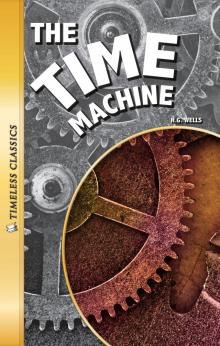 The Time Machine
The Time Machine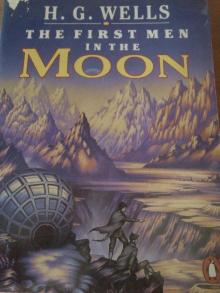 The First Men in the Moon
The First Men in the Moon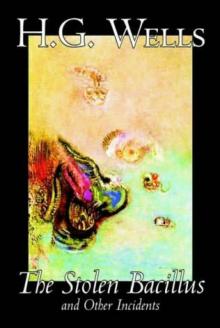 The Stolen Bacillus and Other Incidents
The Stolen Bacillus and Other Incidents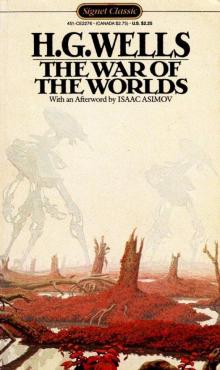 The War of the Worlds
The War of the Worlds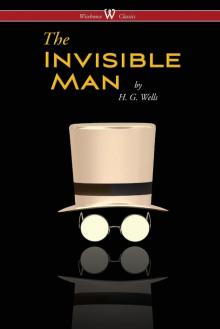 The Invisible Man: A Grotesque Romance
The Invisible Man: A Grotesque Romance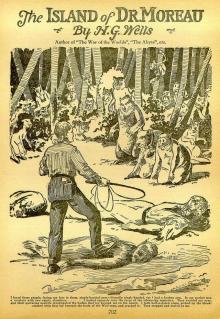 The Island of Doctor Moreau
The Island of Doctor Moreau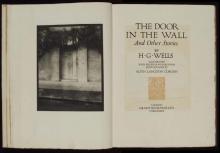 The Door in the Wall, and Other Stories
The Door in the Wall, and Other Stories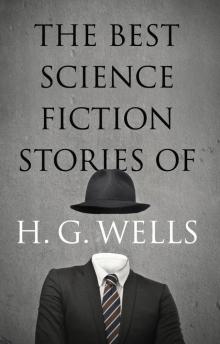 The Best Science Fiction Stories of H G Wells
The Best Science Fiction Stories of H G Wells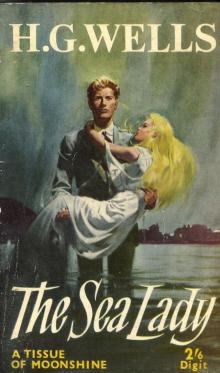 The Sea Lady
The Sea Lady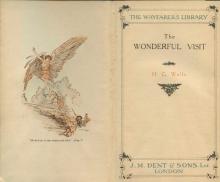 The Wonderful Visit
The Wonderful Visit Love and Mr. Lewisham
Love and Mr. Lewisham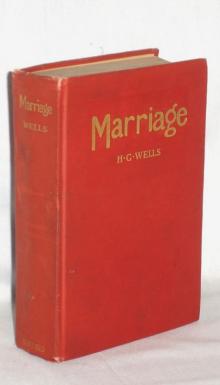 Marriage
Marriage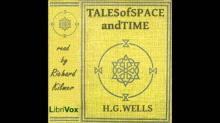 Tales of Space and Time
Tales of Space and Time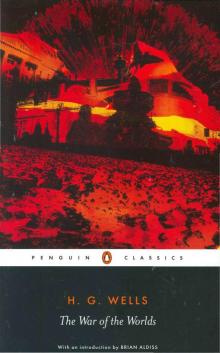 The War of the Worlds (Penguin Classics)
The War of the Worlds (Penguin Classics) Twelve Stories and a Dream
Twelve Stories and a Dream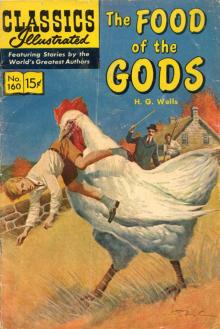 The Food of the Gods and How It Came to Earth
The Food of the Gods and How It Came to Earth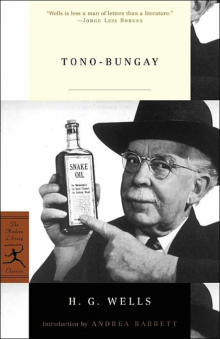 Tono-Bungay
Tono-Bungay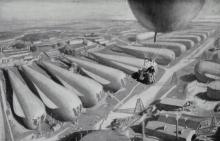 The War in the Air
The War in the Air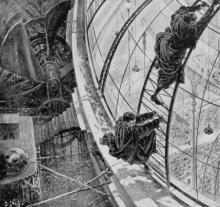 The Sleeper Awakes
The Sleeper Awakes The Country of the Blind and Other Stories
The Country of the Blind and Other Stories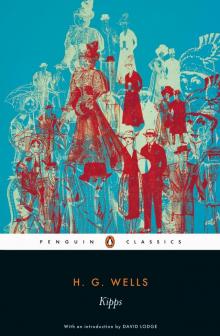 Kipps
Kipps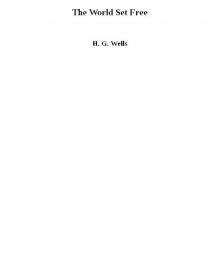 The World Set Free
The World Set Free The Country of the Blind and other Selected Stories
The Country of the Blind and other Selected Stories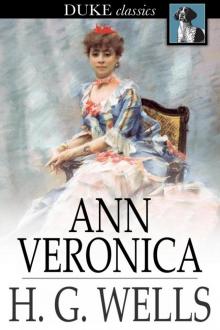 Ann Veronica
Ann Veronica Ann Veronica a Modern Love Story
Ann Veronica a Modern Love Story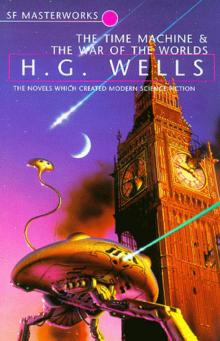 The Time Machine and The War of the Worlds
The Time Machine and The War of the Worlds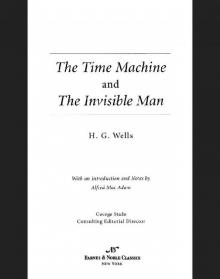 Time Machine and The Invisible Man (Barnes & Noble Classics Series)
Time Machine and The Invisible Man (Barnes & Noble Classics Series)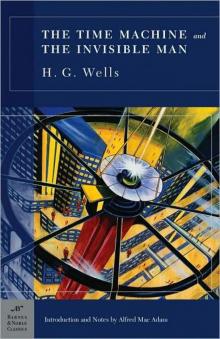 The Time Machine and The Invisible Man
The Time Machine and The Invisible Man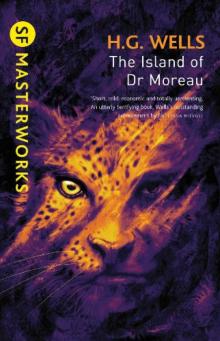 The Island of Dr. Moreau
The Island of Dr. Moreau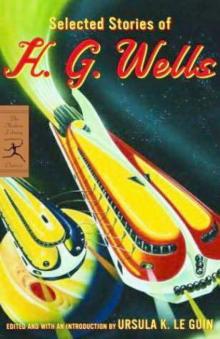 Selected Stories of H. G. Wells
Selected Stories of H. G. Wells Island of Dr. Moreau
Island of Dr. Moreau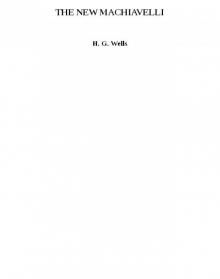 THE NEW MACHIAVELLI
THE NEW MACHIAVELLI